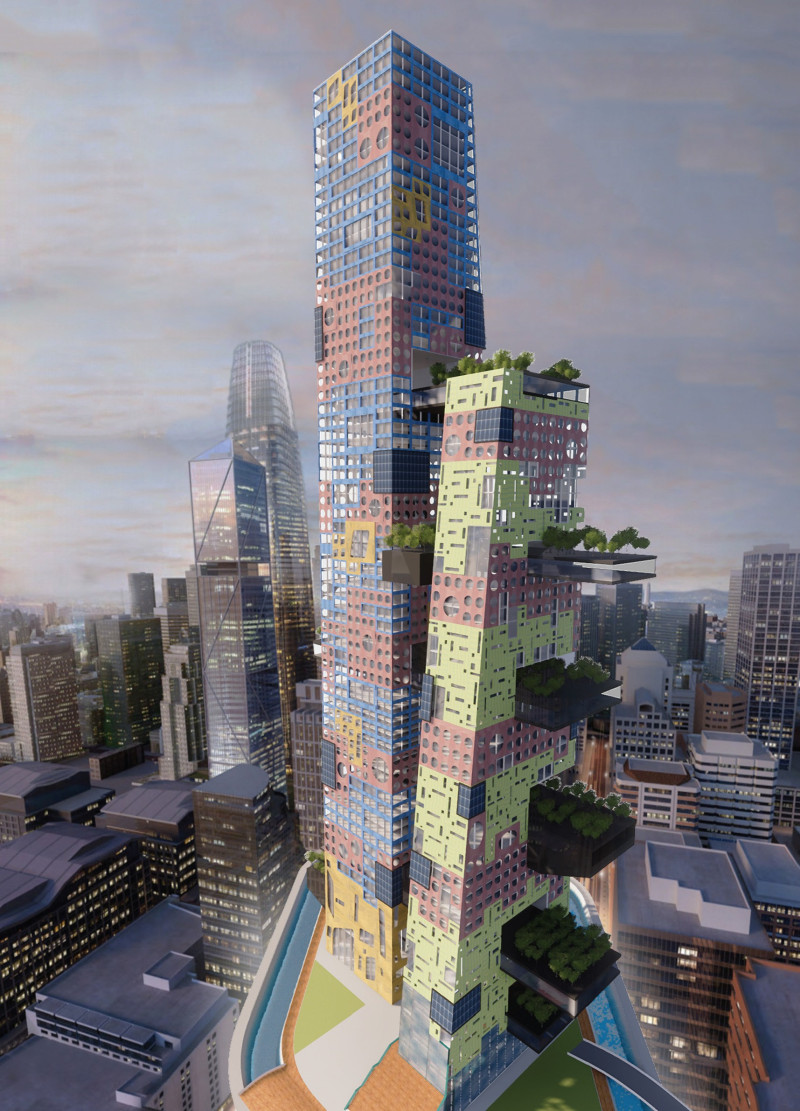5 key facts about this project
One of the most significant aspects of this architectural design is its emphasis on user experience and environmental consciousness. The project embraces the surrounding landscape, with design elements that foster a sense of connection between the interior spaces and nature. Large windows and open layouts promote natural light, reducing the need for artificial illumination during daylight hours and enhancing the occupants' overall well-being. The integration of greenery, such as planters and vertical gardens, not only beautifies the space but also contributes to improved air quality and biodiversity.
Materiality plays a crucial role in the project's overall effectiveness and aesthetic. The use of sustainable materials, such as reclaimed wood, steel, and glass, reflects the designers' commitment to environmental stewardship. The choice of finishes is deliberate, with textures and colors that harmonize with the local context, creating a dialogue between the building and its surroundings. The façade features a thoughtful combination of materials that not only aids in thermal regulation but also encapsulates the project’s ethos of blending modernity with nature.
The entryway is designed to be inviting and accessible, a deliberate choice to encourage community engagement. The spacious lobby area functions as a transitional zone, where users are welcomed while also offering spaces for informal gatherings or collaborative work. This multifunctional aspect of the entry not only enhances the usability of the building but also fosters a sense of belonging among the community members.
Unique design approaches are evident throughout the project, particularly in its layout and spatial organization. The design team has prioritized flexibility, allowing spaces to be adapted for various uses. This versatile approach not only maximizes the utility of the areas but also meets the diverse needs of the community it serves. Modular furniture and movable partitions facilitate quick reconfiguration, supporting a range of activities, from workshops to social events.
The roof design, often overlooked in architectural discussions, adds another layer of uniqueness to the project. The incorporation of green roofs and solar panels underscores the commitment to sustainability, providing insulation and energy efficiency. This design choice not only contributes to the building's ecological footprint but also offers an enticing space for recreation or gatherings, further enhancing the connection to nature.
In exploring the architectural plans and sections, one can gain a deeper understanding of how the project achieves spatial fluidity and cohesion. The flow between areas promotes a natural movement throughout the building, while strategically placed sightlines create an awareness of the surrounding environment. The architectural designs emphasize transparency and openness, shaping user interactions and fostering a collaborative atmosphere.
Ultimately, this project stands as a testament to contemporary architectural practices that prioritize sustainability, community, and user experience. By engaging thoughtfully with its context and employing intelligent design strategies, it not only serves as a functional space but also as an inspiration for future architectural endeavors. For those interested in delving deeper into the project's intricacies, it is encouraged to review the architectural representations, including plans, sections, and other design documents, to fully appreciate the concepts and ideas that gave rise to this remarkable architectural achievement.


























